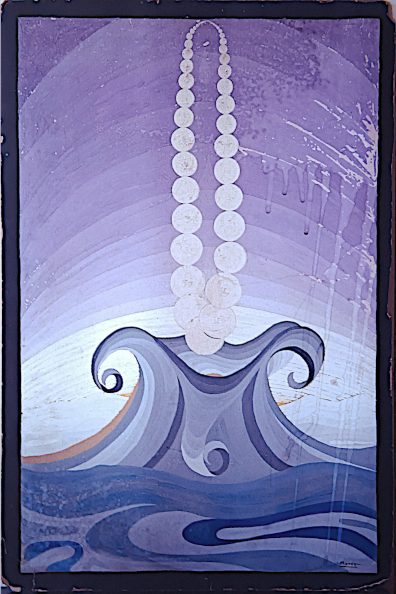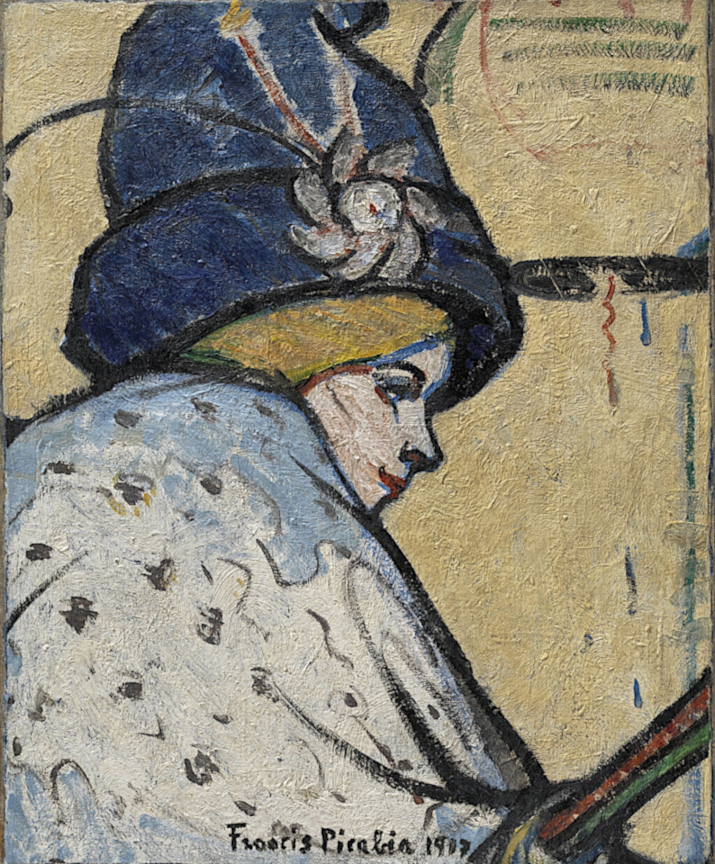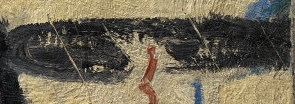Home
Guided Navigation
Everything you need to know in four pages.
Morée 1915-1916
The altered signature of Morée— bracketed with dots to retrofit it into the Nude sequence—provides
the first key to situating the work in time. Traces of its presence had surfaced within Duchamp’s circle
by mid-1917. Picabia’s Mistinguett (Mid-1917) and Arensberg’s poem Theorem (May 1917) both document the painting—one visually, the other textually. Crucially, each records the distinctive process by which it was made, binding themselves so specifically to Morée that no other work could plausibly be substituted. In this context, Morée likely predates Duchamp’s Nude Descending a Staircase No. 3 (late 1916).
At a moment when Duchamp was still wrestling with the misreading of Nude No. 2, Morée isolates the pearl strands from the sequence and highlights them only to render them being cast into a watery grave. Morée stands as Duchamp’s last independent painting; the works that followed—Nude No. 3 and Tu m’—were not self motivated works but reluctant commissions.
As Duchamp’s final personally motivated painting, Morée can be read as a double memorial: a closing of both the Nude saga and of painting itself. Even its title, legible as “she who has died” underscores this funerary role. Conceived to remain hidden yet preserved in echo, the work emerges as the hinge between the Nudes and Duchamp’s renunciation of painting, while also introducing strategies and motifs that would continue to reverberate throughout the Arensberg circle.
The Embedded Proofs
Arensberg's Theorem
Walter Arensberg’s poem Theorem (1917) appears to describe Morée directly, while also alluding to the
method of its making. The poem’s language of dissolution and rinsing corresponds to the painting’s drips
and abrasions suggesting that Theorem records both the work’s appearance and its process.
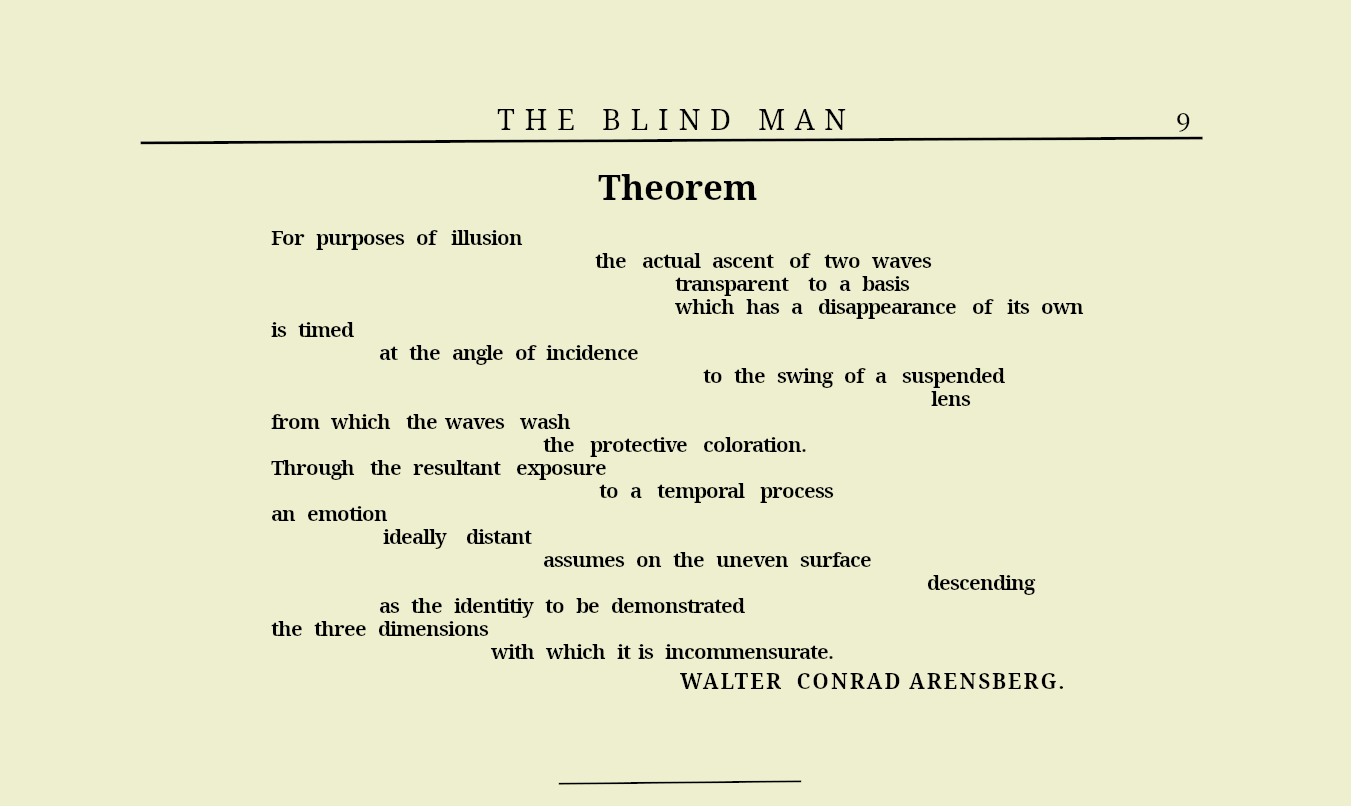
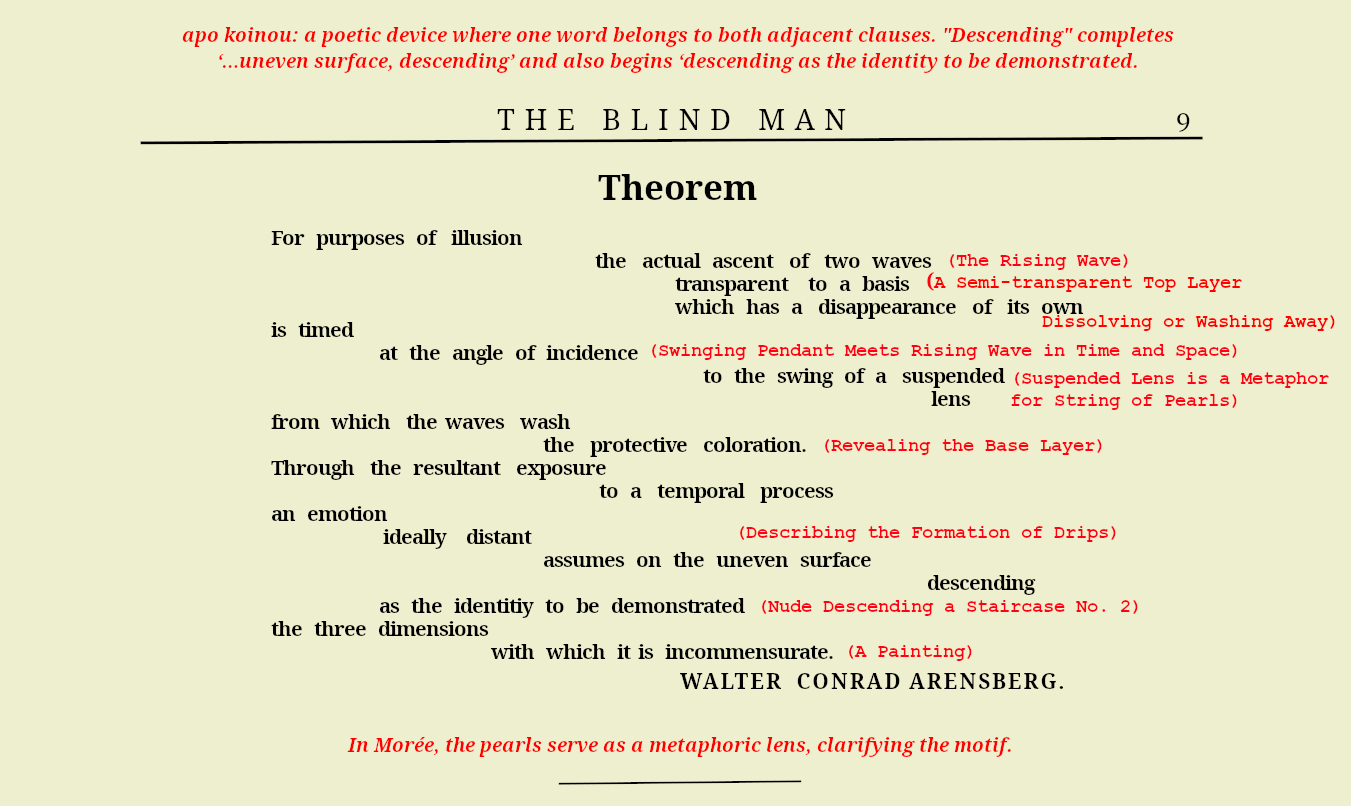
When Paintings Talked
Revealing a Long Lost Dada Conversation
Two paintings — Mistinguett by Francis Picabia and an unsigned work now called Morée — share an uncanny visual and conceptual fingerprint. Drips, scratches, and pools of color play off each other, as if one remembers
the making of the other. Alone, they are curiosities. Together, they suggest a private exchange between
Picabia and “Morée” — a missing link in the birth of Dada that has gone unnoticed for over a century.
Side by side, they speak—and ask us to look again.
Sisters in Sabotage
The connection between Morée and Mistinguett runs deeper than their drips and theatrical spaces. Together, they form an act of sabotage — and possibly a shared ideal between two artists at the birth of Dada.
In Mistinguett, Picabia appears to abstractly recreate the process behind Morée — turning its making into a kind of cryptogram. The vertical drips in Morée — subtractive and cutting through the background — reappear in Mistinguett, but here they are painted and crossed by smeared fingerprints, as if demonstrating the act of sabotage. The black pool in Mistinguett can be read as the dark ink wash that once covered areas of Morée.
The incised scratches in this black field suggest the deliberate removal of that wash — an erasure that, in Morée, is achieved through rinsing rather than scratching. There is also a direct echo of the scraping seen in Morée’s defaced signature. As far as current research shows, Morée and Mistinguett are the only two works in early Dada to demonstrate this distinctive surface intervention.
These acts of surface disruption and deliberate imperfection are hallmarks of a broader Dada vocabulary — one that Marcel Duchamp had already begun to refine in his own work. Placed in that context, Morée reads less like an anonymous outlier and more like a deliberate experiment, closely aligned with the tactics of Duchamp and Picabia during this explosive early moment in the movement.
Things Get More Compelling
Here, things get a little technical, but it’s worth understanding.
From that black pool in Mistinguett, a red squiggly drip curls downward. The way the black recoils from the red isn’t just a painter’s flourish — it mimics something precise: the Marangoni Effect. Think of what happens when you add a drop of soap to an oily pan — the oil snaps away in a sharp, repelling motion as surface tension shifts.
In Morée, we believe a mixture of alcohol and water were used to trigger this effect, cleanly lifting black surface tint to reveal the violet base beneath. In Mistinguett, Picabia encodes the same act in paint: red for alcohol, black for ink, their push-and-pull standing in for the exact sabotage that defines Morée.
Seen this way, Mistinguett doesn’t just reference Morée —
it reenacts its making in code. And that is no accident.
